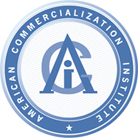 |
High Paying
US Jobs, Economic
Empowerment
&
Revitalization
of
States through Federal Power |
"Critical Field"
Technology Innovation
&
Maximized Profits on
R&D and Investments |
Prevention of Biochemical
and Nuclear Proliferation
&
Homeland Security
Technologies |
Innovative Sand-Erosion Resistant
Coatings for Propellers and Helicopter Rotor Blades
High performance propeller driven vehicles and helicopters for various
transport, surveillance and combat tasks have gained importance in the US
military's preparations to operate reliably in a wide variety of theaters of
operation and environmental conditions. Since light weight and rapid
maneuverability are premium considerations, considerable use of composite
structures of fibers and polymers has found prominence in aircraft constructions
and, in particular, for aircraft rotor blades. Especially in areas with high air
particulate loadings, such as sand or other dusts, rain or ice, and salt, highly
erosive and corrosive conditions are created at the leading edges of rapidly
rotating equipment. Excessive wear or roughening of those leading edges can have
serous deleterious effects on the efficiency and aerodynamic performance of the
blades, and hence of the whole machine. Since wear is concentrated at these
leading edges, maintaining them in acceptable shape may have a real bearing on
the service availability of this equipment.
Recognizing the importance of these issues, the US Navy has issued several
requests for proposals for research (SBIR's) to develop new and tougher coatings
for leading edges of such blades, that will provide enhanced erosion and
corrosion resistance, together with improved adhesion to the composite
substrates and thus longer coating life. Each succeeding RFP has sought
improvement over previously available materials to meet the continually
escalating requirements imposed by new aircraft designs and diversifying locales
of concern.
Over the past three years, POLYMERight, Inc. of Fremont, California has been
developing a proprietary technology that can be used to create new polyurethane
elastomers with significantly improved abrasion resistance, higher resistance to
chemicals and petroleum products (including hydraulic fluids and the Navy's DS2
decontamination liquid), strong resistance to hydrolysis (water degradation) and
strong adhesive properties to a variety of substrates over a broad temperature
range. Although such elastomers were originally targeted for industrial
applications (see later), the combination of properties they offer seems ideal
for the helicopter blade application.
POLYMERight is a privately owned company dedicated to the creation of new
specialty polymeric materials that offer combinations of properties not
available in currently commercial products. Such products will be manufactured
and sold by POLYMERight to those markets which can advantageously use the unique
properties provided, typically in the form of adhesives, sealants, coatings and
elastomers, for both retail and industrial uses. One example of this currently
expanding sales to large retail hardware and home repair stores is a line of
POLYMERight's "underwater glue" products that provide unique bonding
characteristics for many substrates, including PVC, in wet environments, even
underwater. A second example is a newly invented coating to protect steel
structures subject to tidal zone splashing and corrosion which is now in
development for the Navy.
The innovative, highly abrasion resistant polyurethane polymer suggested for
the helicopter blade coating is termed a "three block" polyurethane by
POLYMERight. This term is used to highlight the fact that the new polymer has
three distinct alternating chemical segments in the polymer molecule, rather
than the two segments of conventional polyurethanes. This third segment is a
large cyclical block, and it is this unusual structure which imparts the greater
abrasion resistance and other enhanced properties of the product.
Elastomeric three block polymers provide materials with properties not
heretofore available for commercial use. One category of such uses is in the
mining and construction industries where abrasion severely limits the working
life of many pieces of expensive equipment. Field application of tough
protective coatings and linings in the coal mining industry can permit extended
life for conveyor belts, sieve screens, cyclones, gearing, etc., and offers
major potential savings (many millions of dollars per year). Here is a list of
other such examples:
" Materials for paper-making rolls and other rolls working in abrasive
environments " Materials for pneumatic transmission systems for abrasive
solids (coal, cement, ores, grains, etc.) " Rollers for fork lifts, carts,
bins, etc. crossing abrasive surfaces, concrete floors " Materials for
protection of details subject to cavitation (hydrofoil wings, pump impellers,
slurry systems, etc.)
Protecting highly valuable equipment to extend its life and to reduce down
time, thus enhancing its productivity, provides a major leverage to the value of
these new products in a multiplicity of end uses. Finding the means to support
this development will generate handsome returns on the investment for many years
to come.
